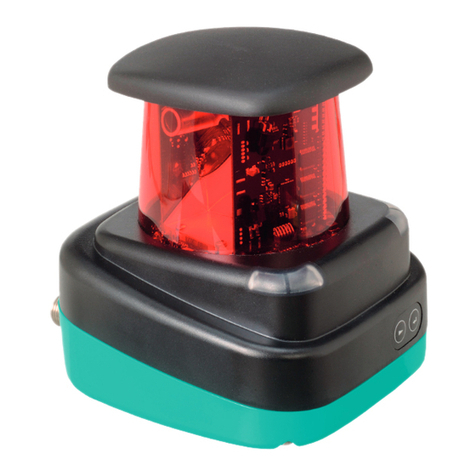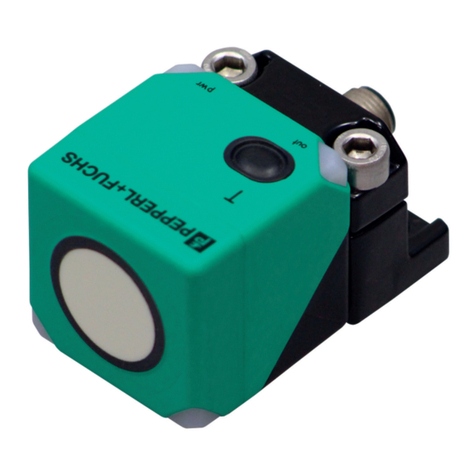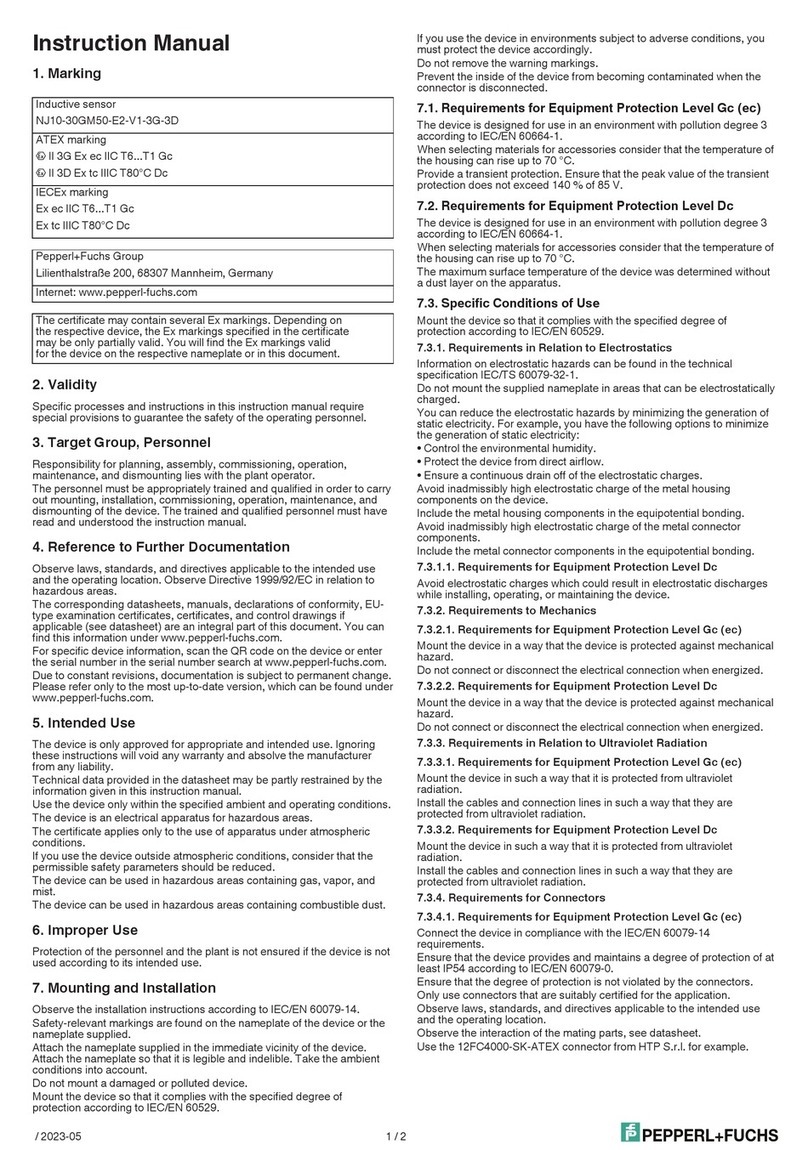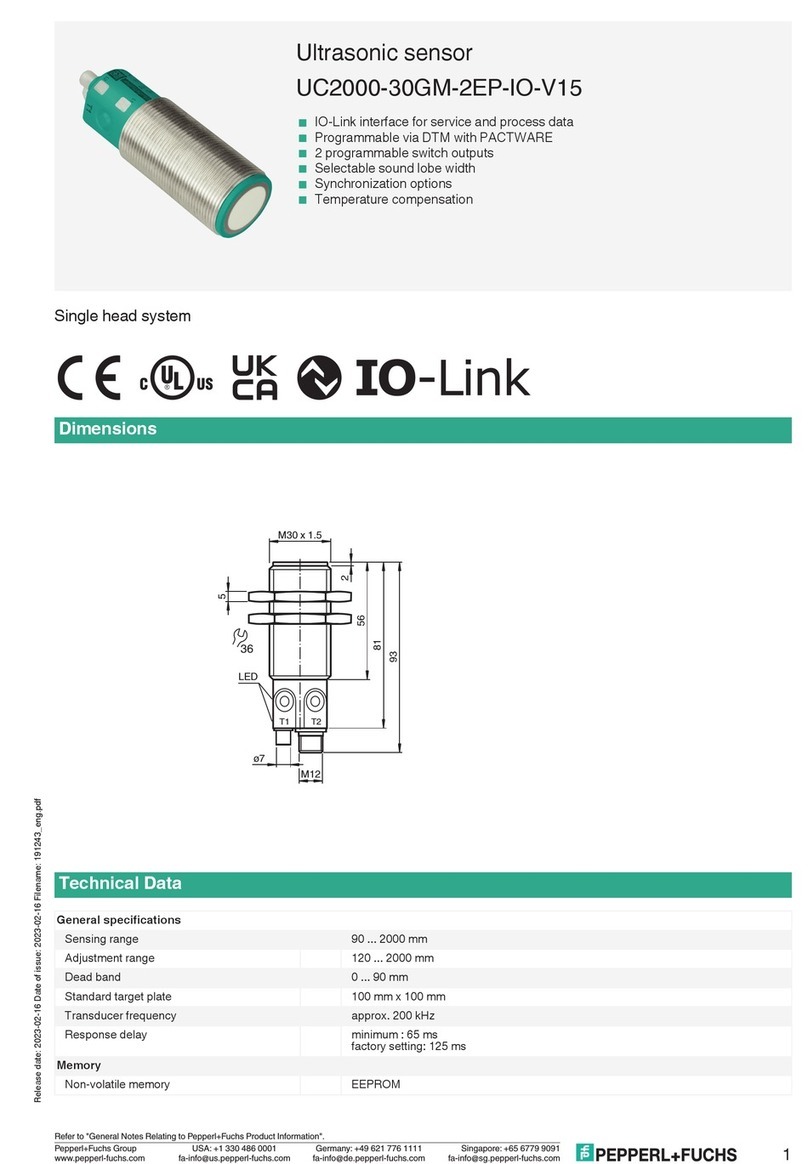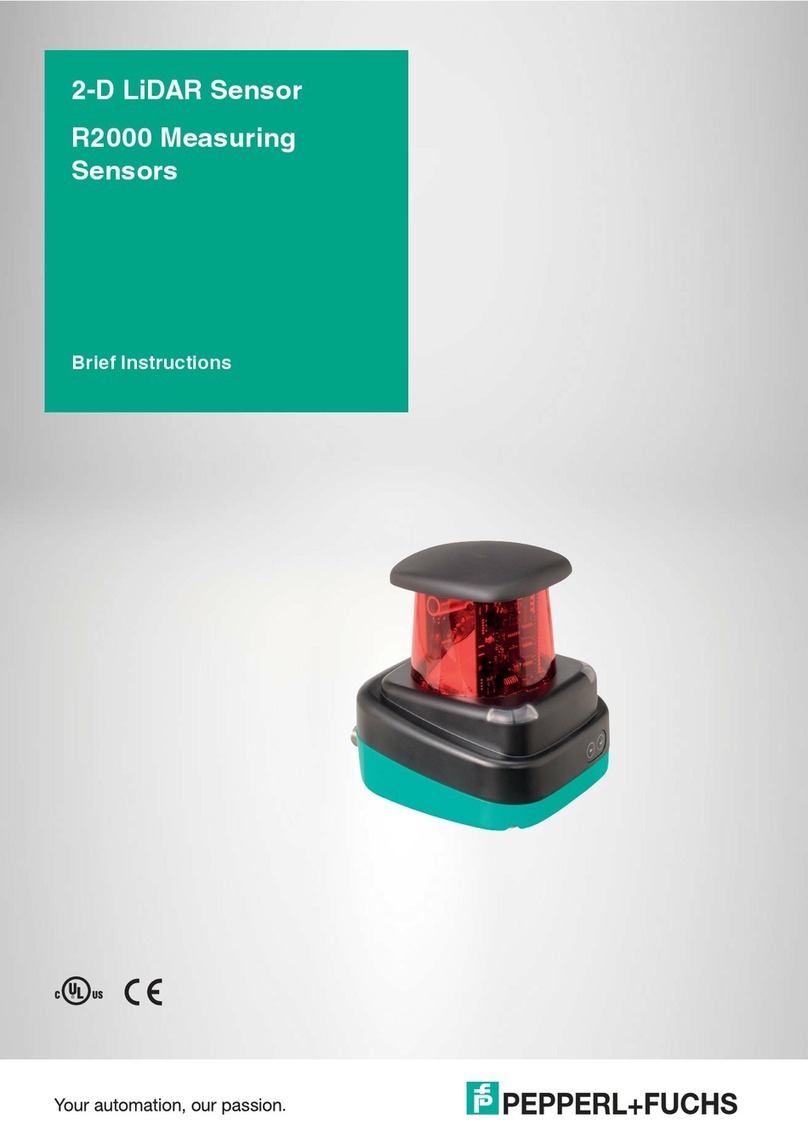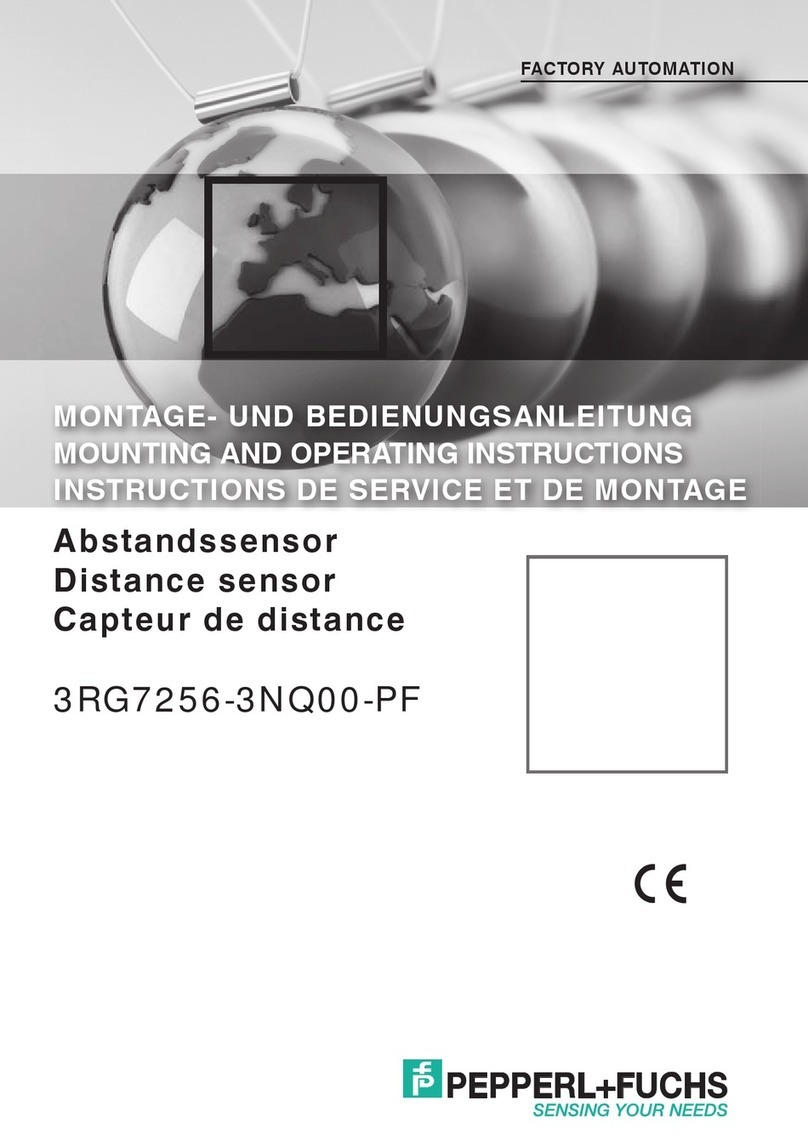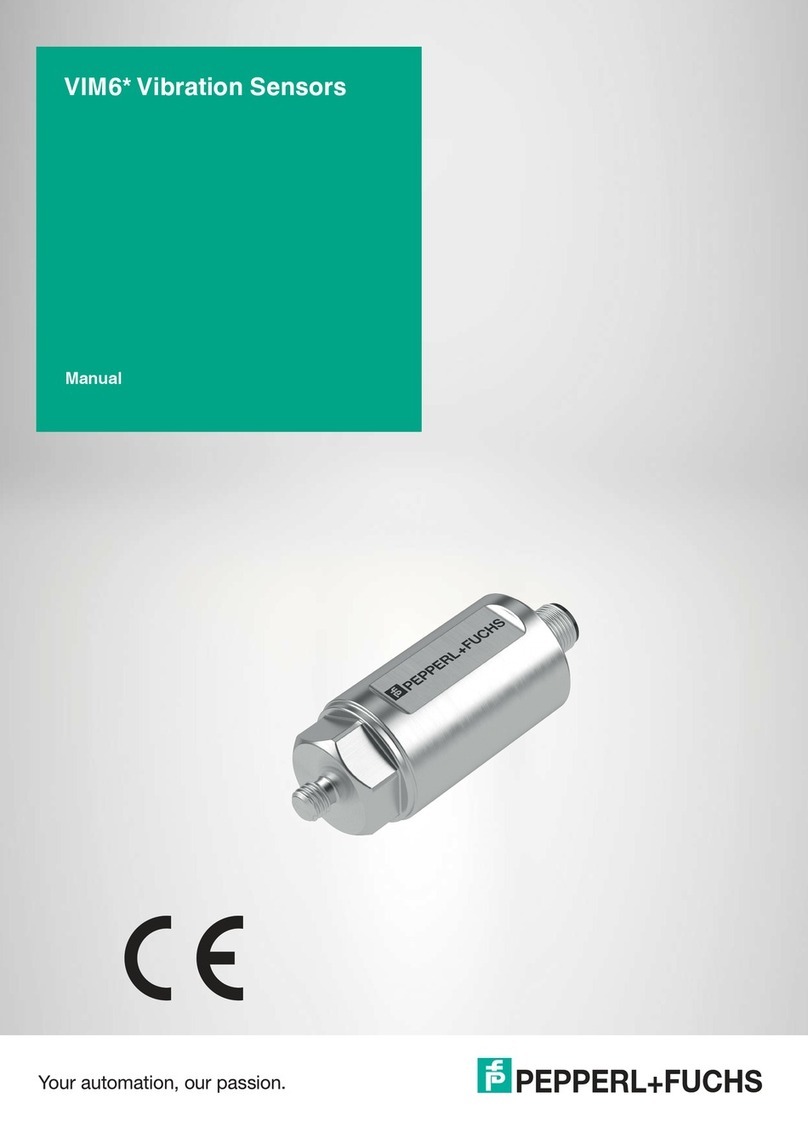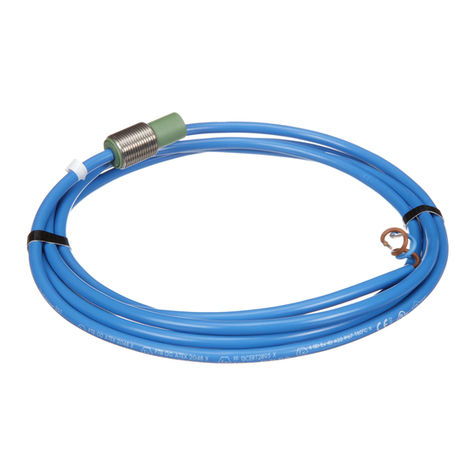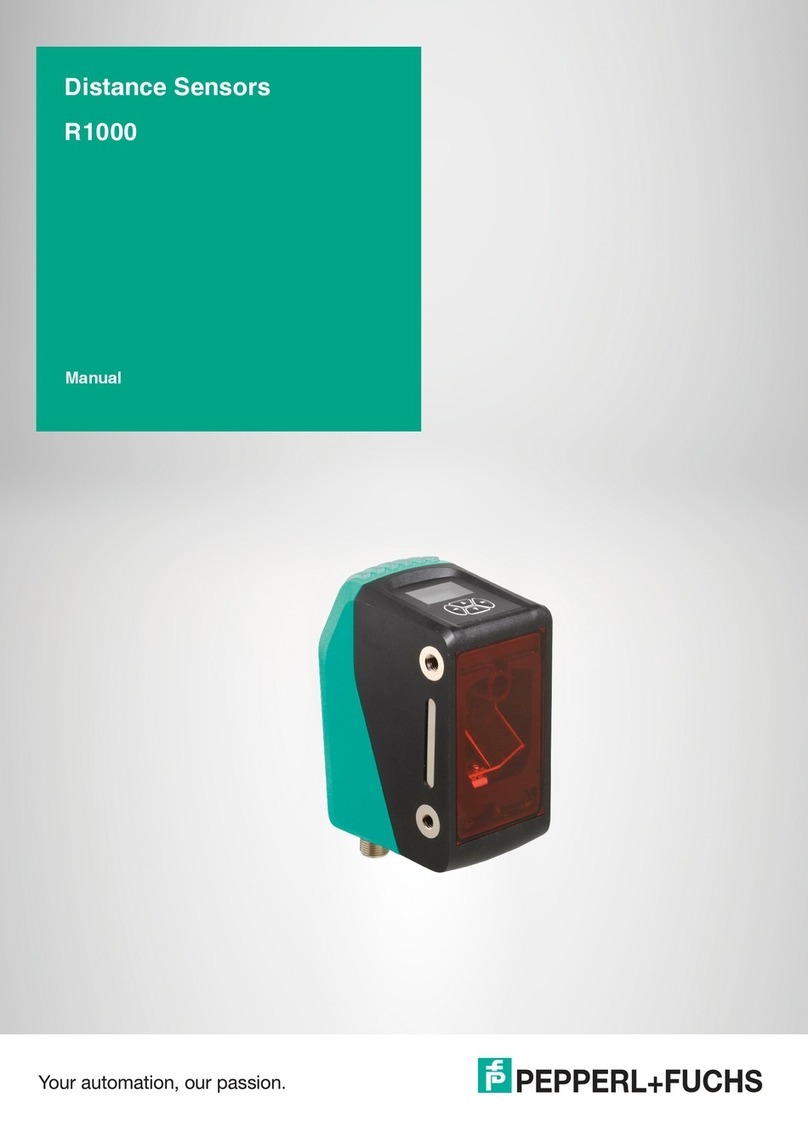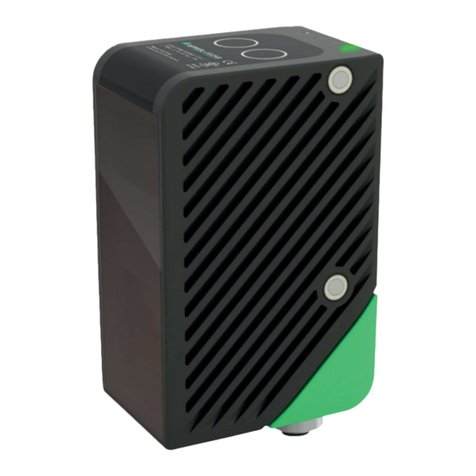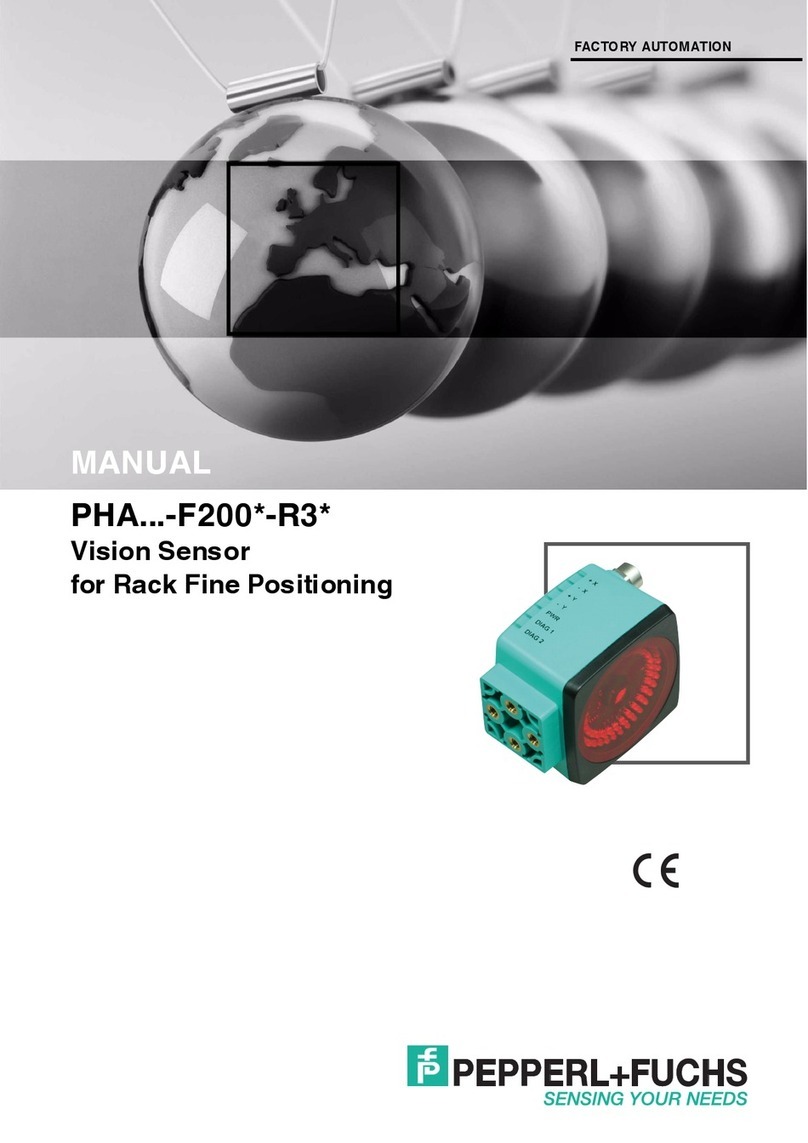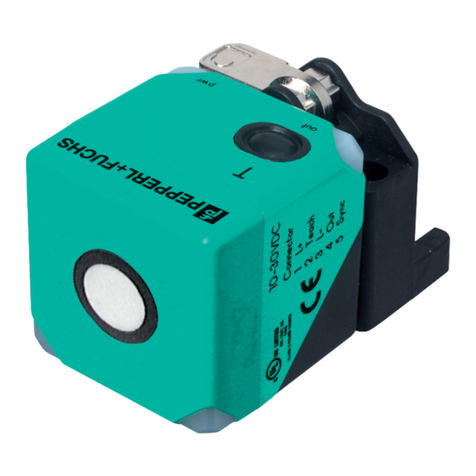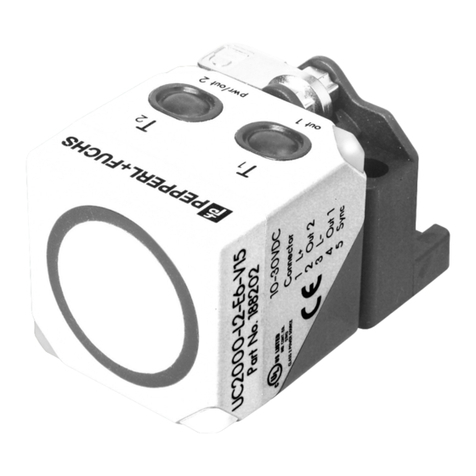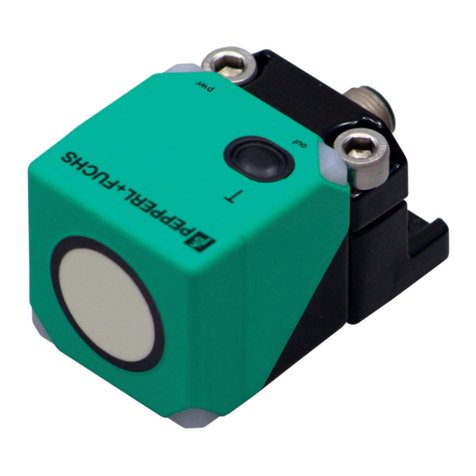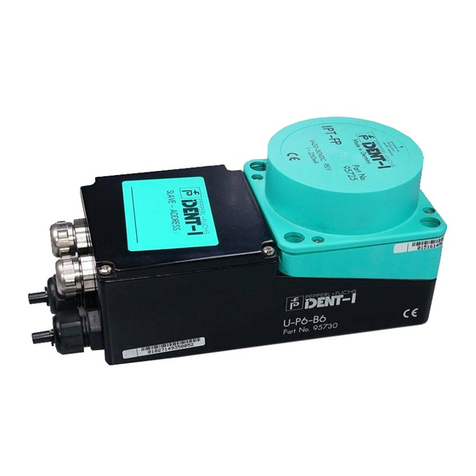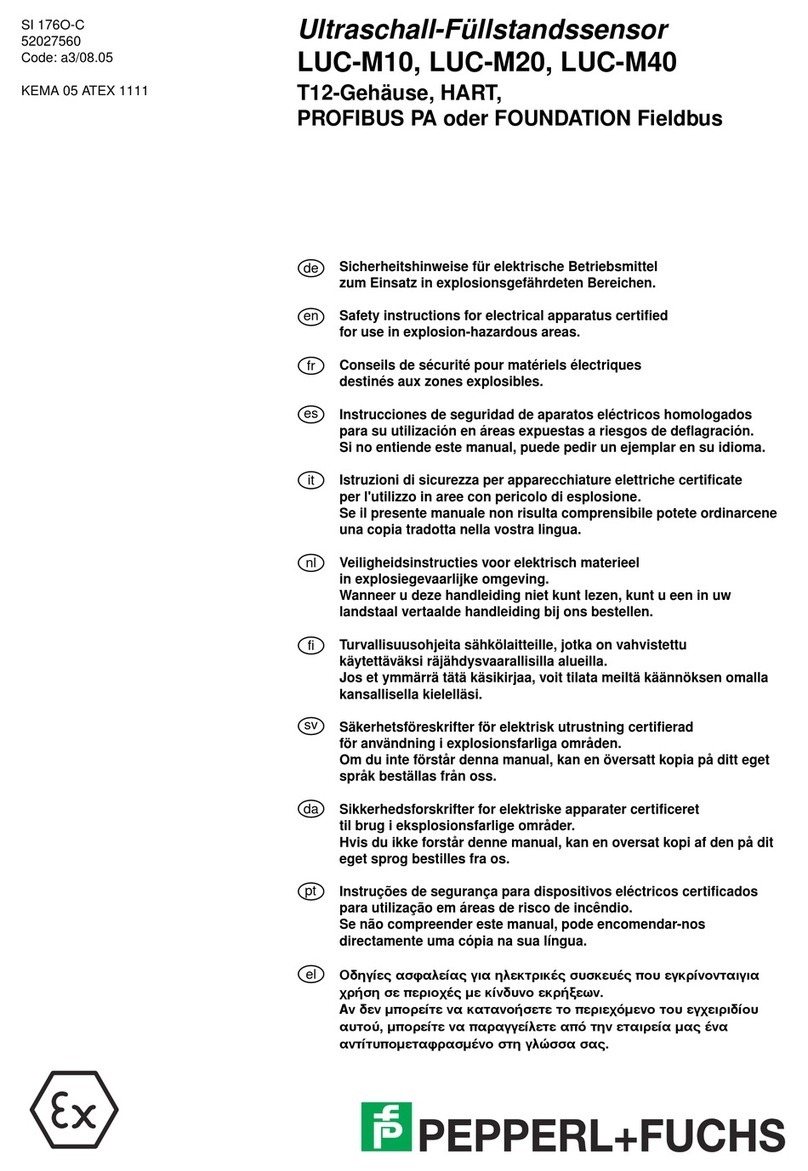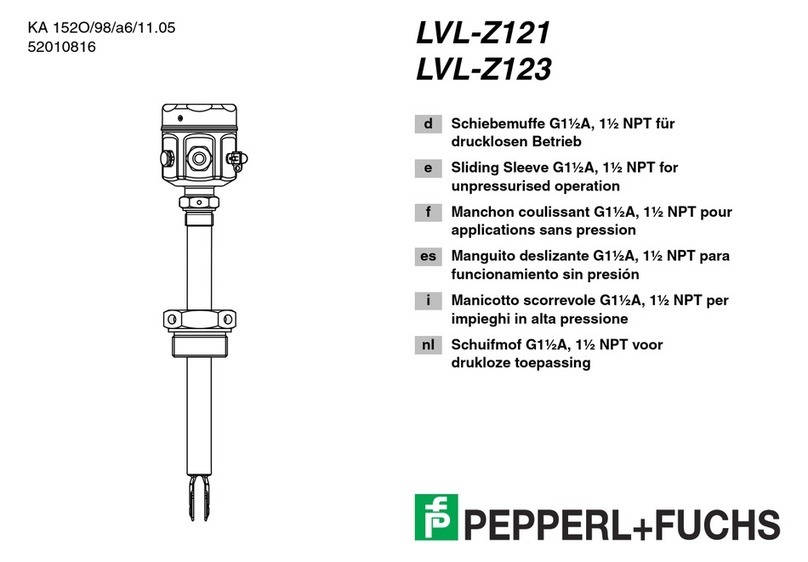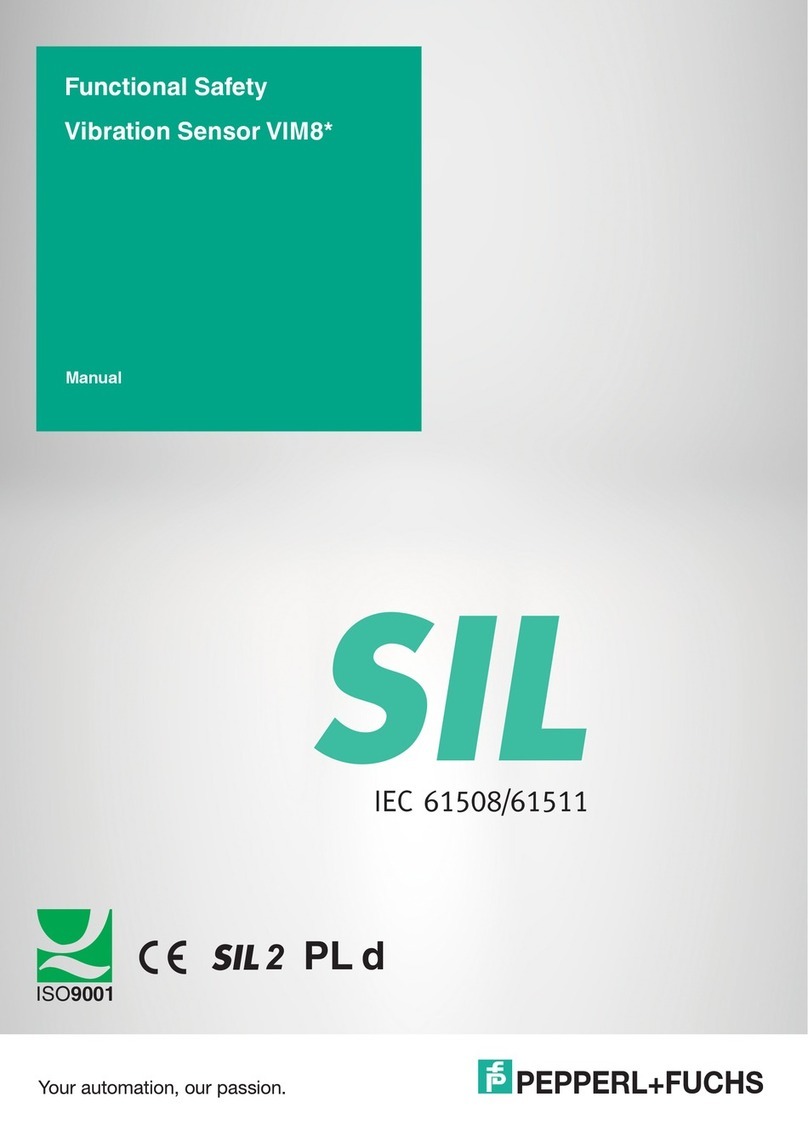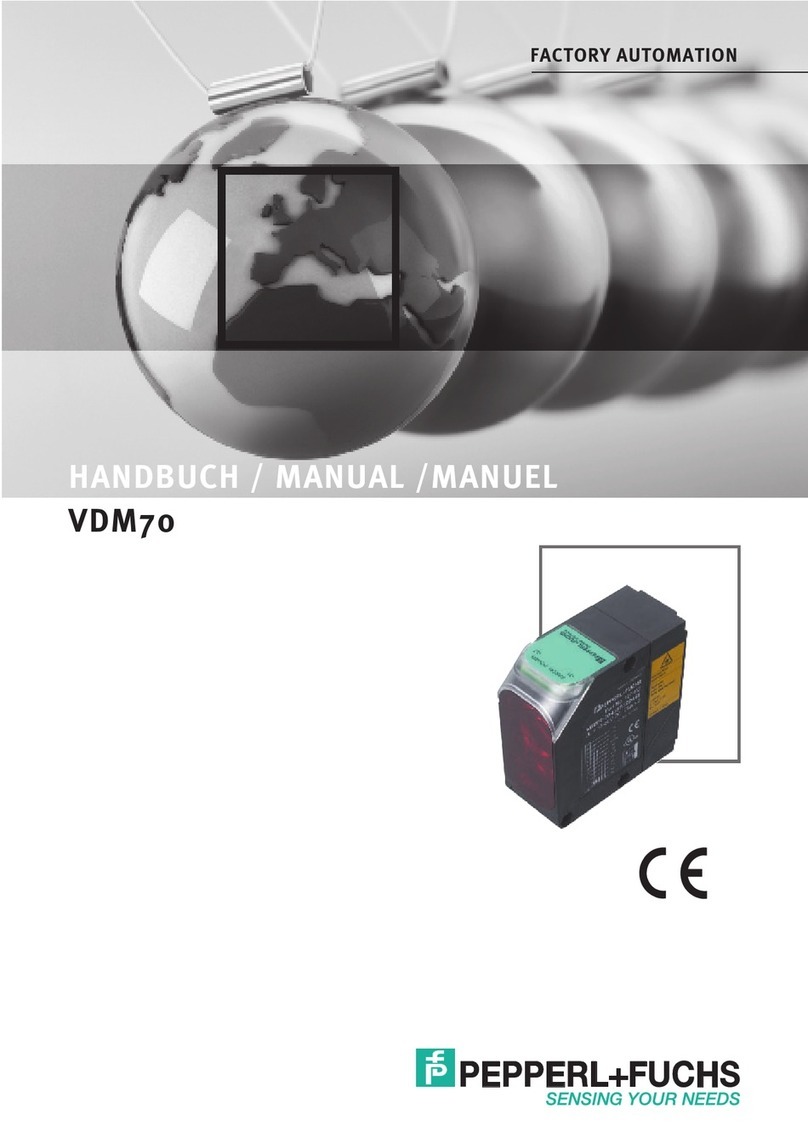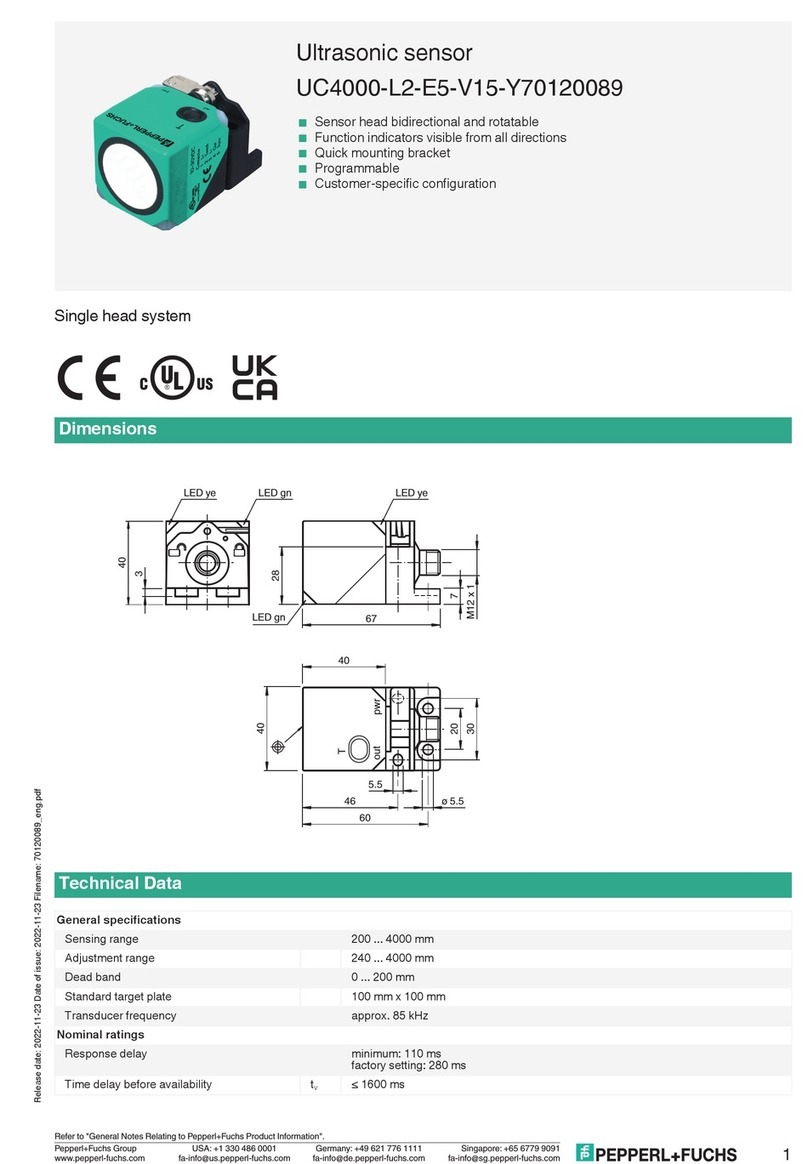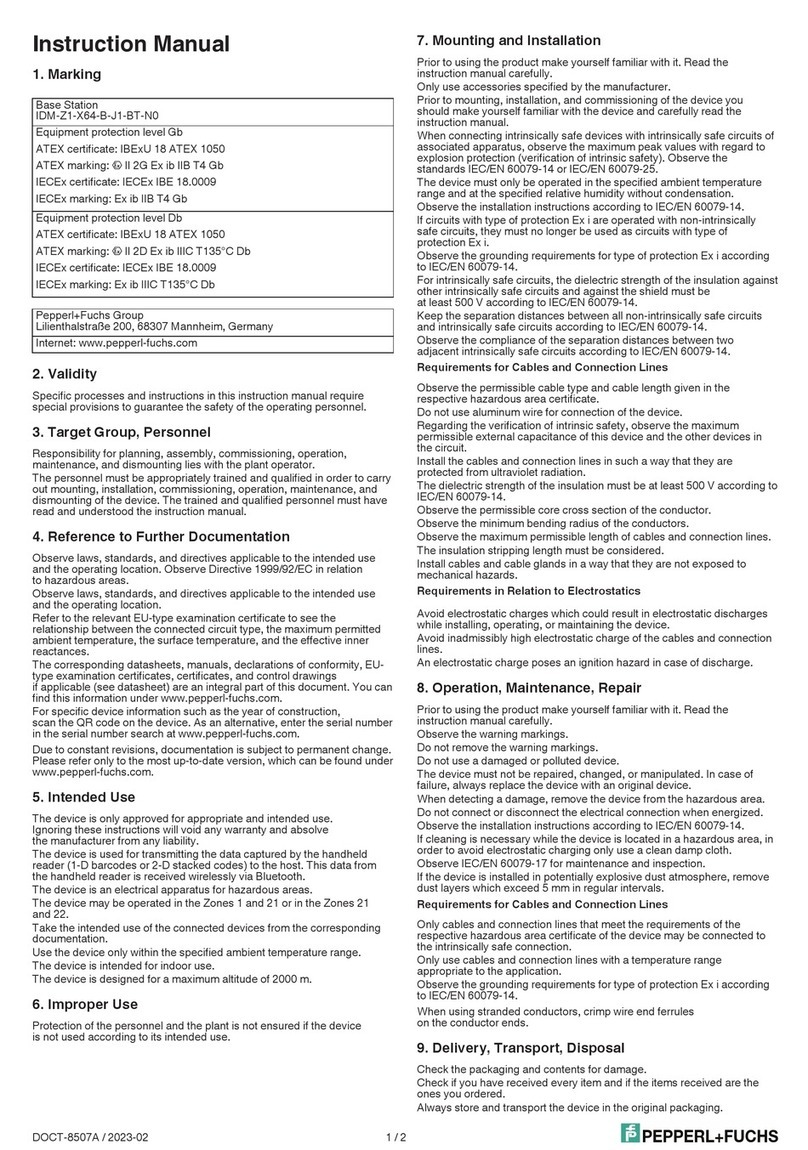
V M8* Vibration Sensors
Product Description
2022-08
7
2 Product Description
2.1 Use And Application
The vibration sensors of the V M8* product family determine the vibration magnitude using the
root mean square (RMS) method. This form of quadratic average determination or pre-filtering
allows precise statements to be made about trends relating to the status of the application.
Depending on the product versions, the vibration magnitude is determined either as the vibra-
tion acceleration (in g rms) or as the vibration velocity (in mm/s).
The vibration sensors have a safety integrity level (S L 2) for functional safety applications. Two
relay outputs with independently adjustable switching thresholds are available for functional
safety monitoring tasks. f a controller evaluates both relay outputs simultaneously, it is possible
to monitor a window range, as part of condition monitoring for example. You can set the switch-
ing thresholds and associated delay for the response time directly using rotary switches on the
vibration sensors and save them as a parameter set using a push button.
You can select a suitable sensor version from the V M8* product family based on the require-
ments of your application. The following aspects are the core characteristics of these sensor
versions; some sensors have more than one of these characteristics:
•Sensor versions for measuring the vibration velocity have adjustable switching thresholds
for a pre-alarm and main alarm.
•Sensor versions for measuring the vibration acceleration have a window function with an
adjustable lower and upper switching threshold. An alarm is always triggered if the vibra-
tion velocity is outside the monitoring window, i.e., when the speed is below the lower
switching threshold or above the upper switching threshold.
•Some sensor versions have an additional analog current output, which outputs a bearing
status parameter. This is weighted according to D N SO 13373. t enables a qualitative
assessment of the condition of rolling-element bearings.
•Some sensor versions are also suitable for use in hazardous areas. The relevant national
or international directives and the instruction manual for the product must be followed.
Vibration sensors from the V M8* product family always have two temperature readings: the
measuring head temperature T
M
and the ambient temperature T
A
.
•The measuring head temperature T
M
describes the maximum permissible temperature
range directly at the location where the sensor is mounted. The machine surface to be
monitored must therefore not exceed or fall below the specified measuring head tempera-
ture T
M
for the sensor.
•The ambient temperature T
A
describes the maximum permissible temperature range for
the ambient atmosphere in which the sensor is used.
The two temperatures are related as described below. The measuring head temperature T
M
is
always permitted to be a higher temperature than the corresponding ambient temperature T
a
in
the upper range. This means that the machine to be monitored is permitted to heat up to the
upper limit of T
M
and therefore contribute to the heating of the ambient atmosphere. However,
the resulting ambient temperature must not exceed the upper limit of T
A
.
Example
Temperature specifications:
•-35 °C T
M
125 °C
•-35 °C T
A
60 °C
The machine to be monitored must not exceed 125 °C at the location where the sensor is
mounted, while the ambient atmosphere in which the sensor is used must not exceed 60 °C.

